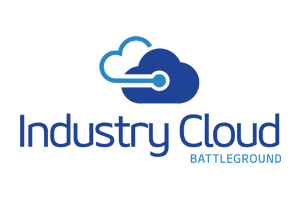FHIR interoperability is an absolute must for the future of healthcare. FHIR (Fast Healthcare Interoperability Resources) makes the exchanging of EHR (Electronic Health Records) between healthcare professionals or organizations more efficient and responsive to the modern demands of digitized health. As an evolving healthcare standard developed by Health Level Seven International (HL7), it is becoming ever important to understand the impact that FHIR will have on Healthcare organizations.
The recent explosion of Industry Cloud and remote care services has made the transfer of FHIR data even more critical for interoperability between on-premises patient data and Cloud, IoT device and data lake, EHR, and Patient Portal.
To shine light on why FHIR interoperability is revolutionizing healthcare, let’s explore why FHIR is important in modern healthcare settings and which vendors provide the best services to deliver the best patient care available.
Why FHIR is Important in Modern Healthcare Settings?
HL7 International developed FHIR (pronounced “fire”) in response to the widespread digital innovations and rapid adoption of cloud technology in healthcare. As an update from HL7 version 2.x and HL7 version 3.x, FHIR is a comprehensive framework that enables the fast and instant access of healthcare documentation and processes such as:
- EHR
- Treatment summaries
- Test results
- PACS (Picture Archiving and Communication Systems)
- Patient portals
- IoT devices (such as RPM heart rate monitors)
- Scheduling (including patient self-scheduling or assigning tasks to available healthcare personnel)
- Billing
- and more
For example, if a patient needs access to their medical records, it is now possible to transfer these files in a secure manner through smartphone apps that are immediately accessible by other healthcare providers. In the past, this transfer would have taken many more steps and delays, but with FHIR facilitating ease-of-use through the Cloud, medical records are available at the touch of a button.
Of course, this just scratches the surface of the new possibilities available with FHIR. Let’s take a look at some of the most important aspects that FHIR interoperability
- Improved Care Coordination
- Efficient Data Sharing and Compatibility
- Facilitates Mobile Usage
- Supports RESTful Architecture
- Provides Ease-of-Use
- Cost-Effectiveness
Improved Care Coordination
Providing patient care is an essential aspect of healthcare–and improved care coordination is what FHIR was designed for. Above all, accessibility is one of the great benefits of FHIR, enabling streamlined access to medical data and seamless communication between stakeholders. This ensures that wait times are reduced to a bare minimum, which is a crucial factor when physicians must collaborate to treat at-risk patients without delay.
Efficient Data Sharing and Compatibility
Efficiency is absolutely crucial to deal with the growing demands in modern healthcare settings. With FHIR, bottlenecks are eliminated by assigning every resource with a unique identifier that’s similar to URLs. Furthermore, these unique identifiers work across all operating systems, browsers, and devices for limitless compatibility. By reducing these pain points, there’s less time spent on data transfers, verifying messages between stakeholders, or avoiding misdiagnosis due to incomplete datasets.
FHIR Facilitates Mobile Usage
Smartphones and connected devices are everywhere these days. With over 290 million smartphone users in the United States alone – and expected to grow worldwide – FHIR helps facilitate the trend of mobile access for patients and care providers in healthcare.
Designed for ease-of-implementation via APIs that support popular web standards like XML, HTTP, and JSON, telemedicine on mobile can be customized to fit large hospitals and smaller practices equally well with minimal IT resources. Best of all, FHIR is secure, enabling the transfer of information from device to device in accordance with HIPAA standards.
And due in part to the demands of the COVID-19 pandemic, patients and physicians can rely on telemedicine to avoid the transmission of disease while providing geographic-agnostic treatments to mobile users.
FHIR Supports RESTful Architecture
One of the cornerstones of FHIR is its support of RESTful architecture. With a built-in REST API, data and messaging are able to be manipulated in new ways. Because of lower bandwidth and an overall lean framework, using REST functions like POST, GET, PUT, and DELETE with FHIR helps deliver information without the need to understand complex software and software languages.
FHIR Provides Ease-of-Use
FHIR was built with ease-of-use in mind to help deliver effective patient care. Time lost to train healthcare personnel is significantly reduced with FHIR’s intuitive interface. Even if the details of JSON or XML syntax are not fully understood, FHIR’s interface enables non-technical people to view documents on any browser/text reader that they’re familiar with and still understand the contents within them.
FHIR is a Cost-Effective Solution
Due to the COVID-19 epidemic and other factors, healthcare providers are faced with the challenge of providing care while encountering new financial challenges. By deploying FHIR, healthcare providers are empowered with less time spent on administrative processes and more time devoted to patient care for better outcomes. Because EHRs can be analyzed more effectively, patient outcomes and are improved and processes streamlined.
Because FHIR relies on well-known web technologies (such as the aforementioned RESTful architecture), application development and maintenance with FHIR is simplified when compared to other healthcare architectures. This results in significantly fewer costs associated with training developers and support staff.
Which Cloud Providers offer FHIR?
Now that you understand why FHIR is the best choice in healthcare settings choosing a reliable cloud provider is essential to maximize uptime and ensure a streamlined healthcare practice.
The major cloud providers extending FHIR to customers include:
- Azure Healthcare API’s (Microsoft)
- FHIR Works on AWS Services (Amazon)
- Google FHIR Services
- SAP FHIR Services
Microsoft Cloud and FHIR
Microsoft’s cloud-based FHIR is offered via its Azure network. Azure offers two types of deployments for their FHIR API: open source and managed deployment.
For the open source version, FHIR can be deployed on any infrastructure.
For a managed deployment, Azure leverages the Cosmos DB database service, “a fully managed NoSQL database service for modern app development with guaranteed single-digit millisecond response times and 99.999% availability.“
(Find out more information/documentation about Microsoft Cloud and FHR here.)
FHIR Works on AWS Services (Amazon)
Amazon’s AWS FHIR services (known as FHIR Works on AWS)support the majority of FHIR resource types and operations, incorporating architecture patterns for designing and building integrations to existing systems. Data first is stored in Amazon DynamoDB for CRUD operations and then processed into Amazon Elasticsearch Service cluster for search operations to provide mobile-optimized efficiency.
(Find out more information/documentation about FHIR Works on AWS here.)
Google FHIR Services
Google’s Cloud Healthcare API is built on Spanner, which is described as “a fully-managed relational database with unlimited scale, strong consistency and up to 99.999% availability.” Google Cloud’s Healthcare API is a first of its kind database that offers unprecedented analytic and transactional functionalities and proprietary technologies like indexing and queuing features to achieve excellent performance and scalability.
(Find out more information/documentation about Google’s Cloud Healthcare API here.)
SAP FHIR Services:
(Find out more information/documentation about SAP Patient Management FHIR Interface here.)
Optimize Your Healthcare Practice with FHIR Interoperability
As you can see, FHIR interoperability is uniquely designed to fit today’s healthcare demands and is expected to become the gold standard by 2024. By adopting this framework now with the reliable cloud providers listed in this article, you gain new functionality and efficiency to ensure your healthcare practice responds to emerging technologies for patient-centric care.
Join the Acceleration Economy community to learn more about exciting developments in FHIR interoperability and a wealth of relevant topics to gain insight into the future of healthcare.







